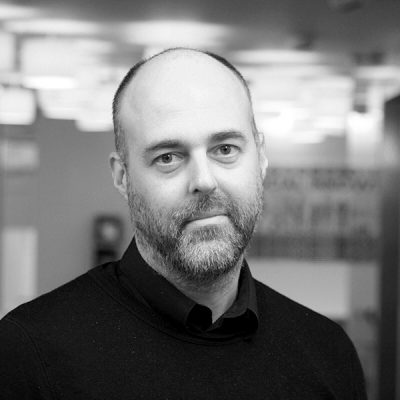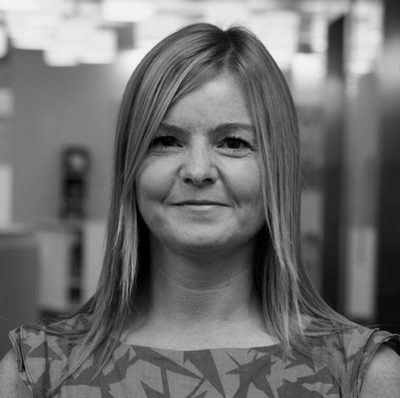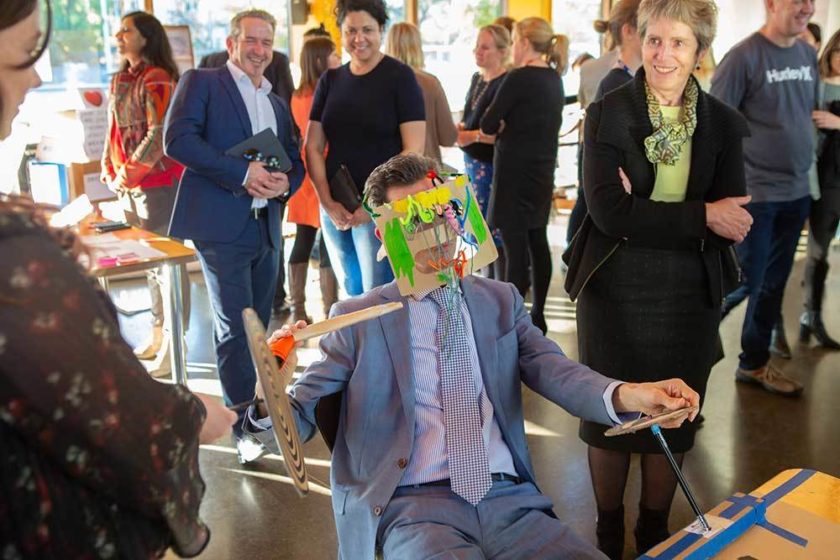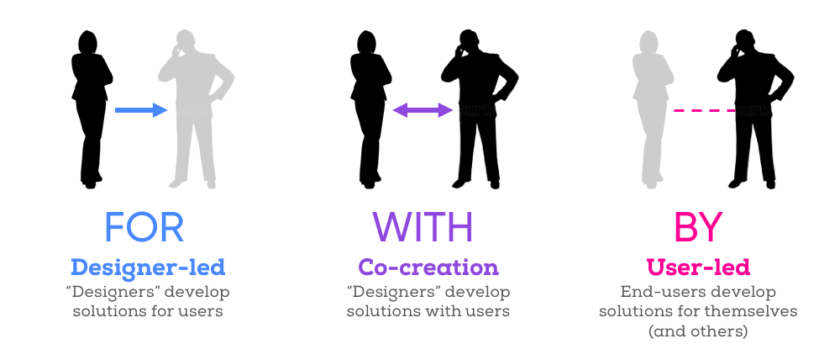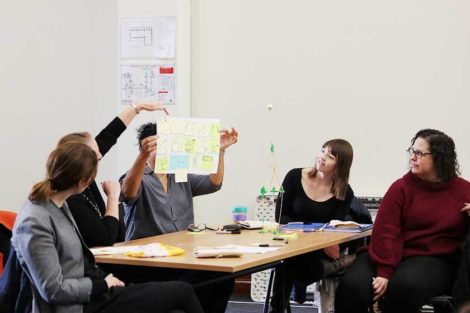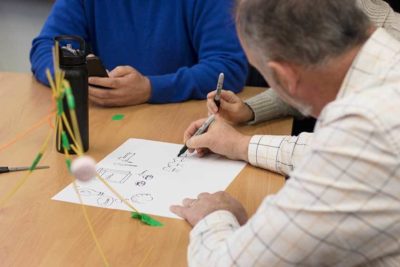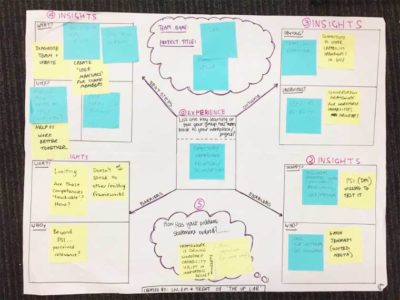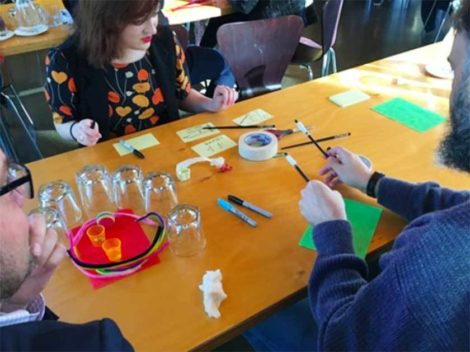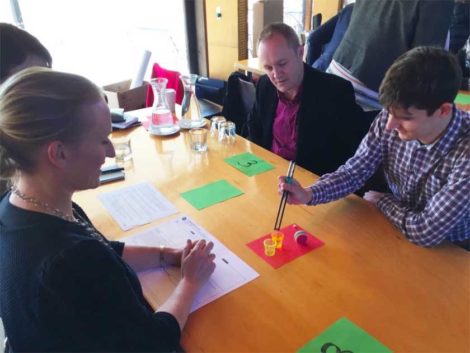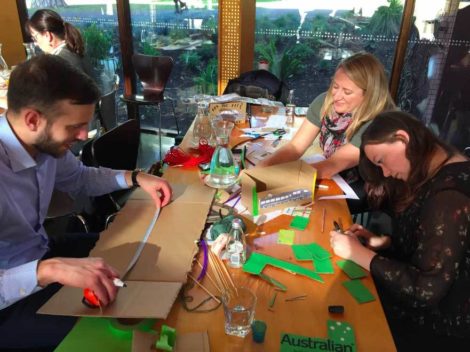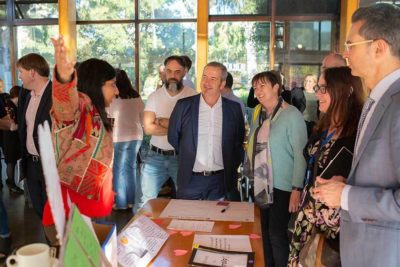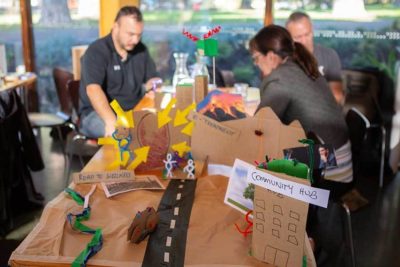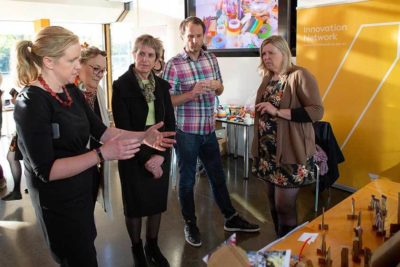We’re well underway with the Fundamentals phase of the States of Change learning programme with our 10 teams from the Victorian State Government, who are each working on a real life project throughout. The Fundamentals phase is comprised of three categories of experimentation - Explore, Trial & Error and Validate - and focuses on taking an experimental approach to problem-solving. This is the second phase of the programme after teams scoped their challenges a few months ago.
Following on from the first Fundamentals Explore session earlier in May, we recently came together again for the Trial and Error session.
About the week
The aim of the week was for participants to learn how to develop solutions that better ‘fit’ the problem, the user and the solution provider by prototyping and co-creating. This explored how we can generate solutions that fit with people’s needs, desires and capabilities. As there are many ways of doing this, our focus was on helping teams to begin prototyping in order to develop solutions “for people”, and co-creating in order to develop solutions “with people”.
Armed with research from interviews and systems mapping exercises completed in the weeks in-between learning sessions, the participants were tasked with translating their potential intervention points into testable hypotheses - hence the name Trial and Error. They were asked to focus on taking action to find out what works, and iterating to improve ideas.
This theme was highlighted on day one by Dominic Campbell (Founder and CEO of FutureGov) as he spoke about designing public services for the digital age, urging the group to apply new approaches, mindsets and business models to redesign organisations to be fit for purpose in the 21st century. One of the lessons he shared was the need for ‘design doing’ rather than ‘design thinking’.
Later that day, participants put this ‘doing’ into practice by building their own tools or canvases; something tangible and visible that enabled teams to share their experiences, insights and reflections with other teams in a different form.
On the second day, the teams analysed the results from their previous field research, followed by an idea generation session (using the fast idea generator) to prepare for prototyping the next day.
Build first (then think or talk)
Before the teams started building their prototypes, we introduced the basics of prototyping with an exercise. For this, the teams had to test an existing prototype (an instrument, ‘Dundee’s chopsticks’) with users and improve the suggested solution to demonstrate the principles of iteration, (user) feedback and observation.
After this, teams built prototypes of what their project interventions might look like to show their peers, colleagues and importantly project sponsors. The instruction was to build first, then think or talk!
The urge to think and plan, or discuss ideas and plans, was hard to resist but the act of starting with building led to some impressive results. As one of the participants explained:
“Usually, I start with planning my activities first. Starting by building felt initially very counterintuitive, but it also made me realise I think too much, making things perfect in my head, while you don’t know how it is going to play out.”
Complete with cardboard cut-outs, game designs and journey maps, the teams shared their prototypes at a drop-in Show & Share with peers, colleagues, project sponsors and members from Victoria’s Public Sector Innovation Network. They proudly presented their journey and progress, and importantly received feedback on their initial ideas, which they’ll use in the coming weeks to iterate their prototype.
Although this was just one small step in the process, for the participants and the faculty alike it felt like a major milestone. After a period of scoping, exploring, analysing, framing and reframing their challenges, pieces of the puzzle fell into place. Channeling their energy into a real, physical prototype exemplified the journey many of them have been on for the last three months, and for all of us it became clear that things were beginning to get real and that the opportunity to influence change was in their collective hands.
Energised from seeing their potential solutions come to life, we then took a change of pace on the fourth day, turning the attention to the principles of co-creation. Returning to how you might design “with people” and looking in particular at how you set the conditions for this to happen. Exercises around empathic and generative listening and Theory U helped participants to hone their deep listening skills, as well as opened up the space for even strong bonds to form across the group.
Establishing an emotional safe space
What we are learning more and more is that this innovation learning journey isn’t just about technical skills; there is an emotional element as well. Learning often requires stepping out of your comfort zone - trusting the process and being willing to give it a go. This is by nature uncomfortable! Added to this, participants are playing a role in bringing their wider government teams on this journey. This is no easy task, and all of this has an emotional effect that participants are processing, individually, as teams and as a cohort.
As the week went on, we saw the learning journey really started to ‘get real’ for participants. The regular morning reflections demonstrated this change of mood. Some participants talked about how they are reaching more tangible points in their projects. Others talked about the challenges of creating change in their organisations and the ways they might be able to support one another across teams. These reflection sessions highlighted an increased sense of trust among the cohort and a safe space to share reflections, emotions, concerns and opinions in a frank and fearless way.
To us, this feels like another milestone as it fosters the conditions for the cohort to create a safety net and self-sustaining support system going forward.
Rhythms and pacing of the programme and innovation processes
We also noticed that the teams, throughout this journey so far, are going through a rhythm of converging (opening up possibilities and options) and diverging (narrowing down options and choosing a direction) as we see in the double diamond process.
Some of these stages can be fairly short, less than five minutes, happening right in front of us in a session, while others can be longer, taking a couple of weeks.
This process never just happens once, and what we are seeing is a chain of these “diamonds”. It can be a struggle for teams to deal with the messiness that comes with opening up options again and again (and again!), but we also notice they are gaining more confidence in this process.
This also reinforces the emotional safe space we are seeing more of now. Teams are deep in the messiness and the emotions that the innovation process brings, but have trust now in not only the process, but also the group and faculty to support them through to the other end of the diamond. By running morning reflection sessions each day, we have been able to provide a rhythm that individuals can rely on in amongst the (sometimes rapidly changing) rhythms of converging and diverging.
We are also noticing the challenge of pacing. Our learning programme has set pacing, where we take the teams through training weeks on the stages of experimentation, but we can’t avoid that the bureaucratic system has its own pace. And not to mention that the projects the teams are working on are real live government projects that have their own unexpected peaks and troughs, and are affected by real-world events. .
Getting the right permissions for teams to carry out fieldwork and engage with a different group of citizens can take time, and meanwhile the learning programme moves on. This means that different teams are at different stages in the programme. We are always making sure we continue to have the supports that wrap around the teams, for instance from their executive sponsors; who have shown a strong commitment to the teams and helped them to carve out the space for experimentation alongside their day jobs.
And we are considering how this might work differently going forward in our about programme designs.
What’s next?
Teams are currently testing, sharing and iterating their prototypes while refining their solutions with key stakeholders. In July we will reconvene for the final training session of the Fundamentals (before teams enter the “activation” phase).
In this “Validate” week we will look at how to test their hypothesis and how the teams can build their advocacy skills by using evidence, storytelling and spreading innovation tools and methods across their organisations. We look forward to being joined by States of Change faculty member Juan Felipe Lopéz, the former chief executive of Chile’s Laboratorio de Gobierno.
